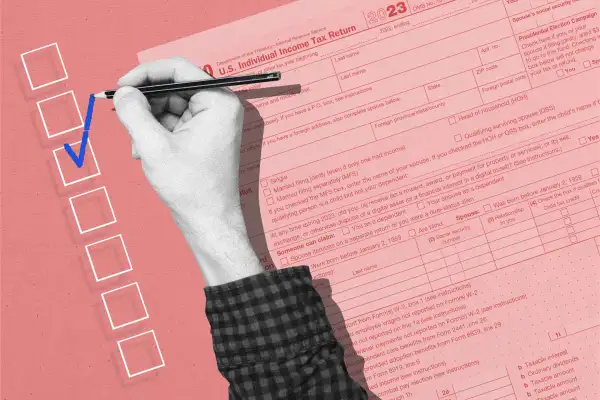Here Are the Federal Income Tax Brackets for This Year

Americans' tax refunds — and, for that matter, tax bills — this filing season are based on seven tax brackets, which determine where their top tax rate falls.
Tax brackets dictate how much you'll pay on each part of your taxable income for the year. They're not set in stone: Each year, the IRS adjusts the thresholds for its brackets based on an inflation index. These adjustments mean Americans don't end up having to pay higher tax rates simply because their wages have grown along with rising prices.
The IRS also makes inflation adjustments to the standard deduction, which is a set amount of income that you don’t need to pay federal taxes on. Most taxpayers take the standard deduction, though there's a fairly small camp of people who itemize.
Here's what you need to know for this year and next.
Tax brackets for 2023
It's important to remember that because the U.S. has a graduated-rate structure, your top rate isn't the percentage you pay for all your income. You only pay that top rate for the amount of taxable income you make above the bracket threshold.
For 2023, the lowest tax rate, 10%, applies to your first $11,000 of taxable income if you're a single filer. At the top end of the brackets, single filers owe the max rate of 37% for taxable income above $578,125 in 2023.
The standard deduction is $13,850 for single filers and $27,700 for married couples filing jointly.
tax rate | single filers | married filing jointly |
|---|---|---|
10% | $0 to $11,000 | $0 to $22,000 |
12% | $11,000 to $44,725 | $22,000 to $89,450 |
22% | $44,725 to $95,375 | $89,450 to $190,750 |
24% | $95,375 to $182,100 | $190,750 to $364,200 |
32% | $182,100 to $231,250 | $364,200 to $462,500 |
35% | $231,250 to $578,125 | $462,500 to $693,750 |
37% | $578,125 and up | $693,750 and up |
Tax brackets for 2024
At the start of this year, you may have noticed that your paycheck got a bit larger as a result of the IRS's inflation adjustments for 2024 (those are the taxes you'll file next spring). While the tax rates are identical for 2023 and 2024, the IRS increased the income thresholds that determine your bracket by about 5.4% for 2024.
The IRS also raised the standard deduction for 2024, increasing it to $14,600 for single filers and $29,200 for married couples filing jointly.
Basically: If your income doesn't change between 2023 and 2024 — and assuming all else stays the same — your 2024 tax bill should come out lower due to the changes, or your refund should be be larger. It's also possible you'll move into a lower bracket if you were just above a cutoff.
tax rate | single filers | married filing jointly |
|---|---|---|
10% | $0 to $11,600 | $0 to $23,200 |
12% | $11,600 to $47,150 | $23,200 to $94,300 |
22% | $47,150 to $100,525 | $94,300 to $201,050 |
24% | $100,525 to $191,950 | $201,050 to $383,900 |
32% | $191,950 to $243,725 | $383,900 to $487,450 |
35% | $243,725 to $609,350 | $487,450 to $731,200 |
37% | $609,350 and up | $731,200 and up |
More details regarding the tax bracket adjustments are available on the IRS website.
More from Money:
2024 Tax Brackets: IRS Increases Income Thresholds, Standard Deduction Due to Inflation

